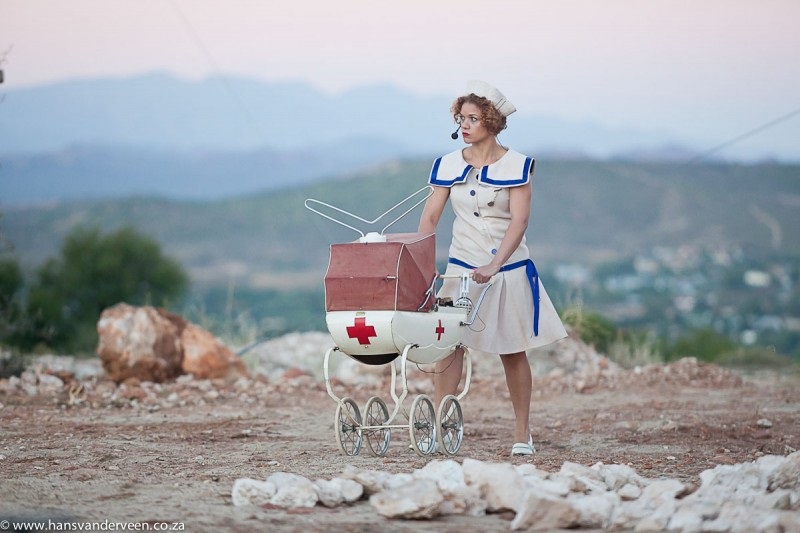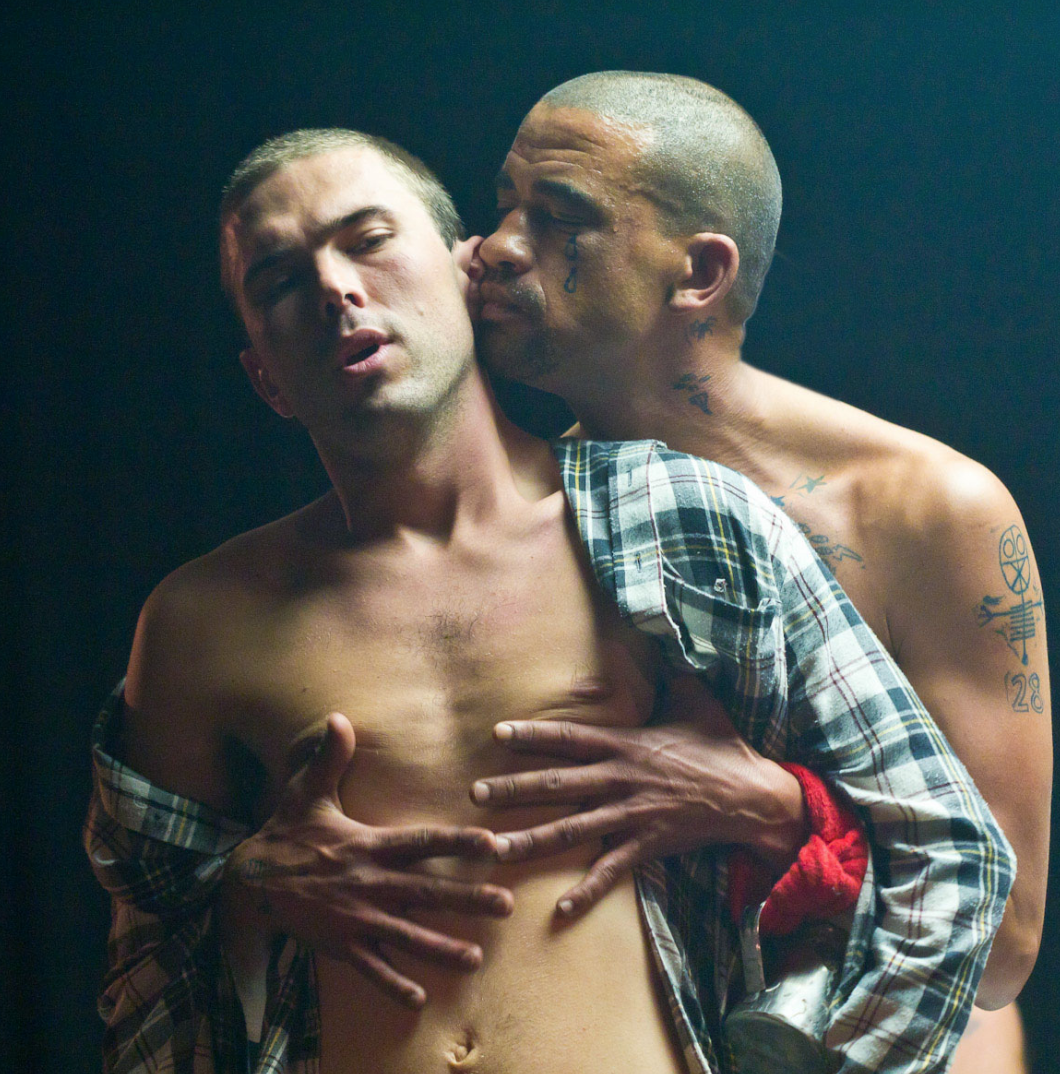The Klein Karoo Nasionale Kunstefees (abbreviated to KKNK) is a national arts festival with a primary focus on Afrikaans language in performing arts held annually in Oudtshoorn for eight days near Easter . Conceptualised by the local businessman and lawyer Nic Barrow and the former head of Naspers, Andrew Marais, as an Afrikaans equivalent of the Grahamstown National Arts Festival, the KKNK launched in March 199, to establish, and indeed, defend, the place of Afrikaans culture in post-apartheid South Africa. Barrow was the chairman of the initial directory board, which under the guidance of advisors Adam Small, Merwe Scholtz and Franklin Sonn aimed to inaugurate a racially inclusive and politically, culturally and religiously independent festival, in principal disassociated from the former Afrikaner Nationalist governance. Film director Jans Rautenbach succeeded Barrow in 1999. Creative Directors of the festival have included Gerrit Geersema (1994), former director of TRUK (The Transvaal Council for Performing Arts), the dramaturge Pieter Fourie (1994-1999), the head of the Afrikaans DSTV Channels KykNet, Koowee and MK, Karen Meiring (1999-2007), current Head of the Wits School of the Arts, University of the Witwatersrand, Brett Pyper (2007-2013) and theatre producer Hugo Theart (2015 - ). Corporate sponsors of the festival have included Naspers, Transnet and ABSA, but in recent years the festival is presented inter alia Kunste Onbeperk NPC (Arts Unlimited NPC) a non-for-profit company that also presents the classical music and food festival Klein Karoo Klassique, as well as several arts education, audience and community development programmes. Attendence of the festival has marked it as the largest arts festival in South Africa, although the demographics remain largely White.
As with most long standing cultural festivals, the KKNK has undergone several transformations. In its fledgling years the festival saw its commercialisation, homogenisation, and standardisation as a special annual event on the arts calendar, becoming a beacon for the performing and visual arts. The ‘Rimpelfees’ or Fringe Festival as category was removed in 2004. Tensions have marked the festival – both in terms of the production of high art in cutting edge theatre and exhibitions combined with the pedestrian demands for popularisation of the festival in the form of food stalls, free programming, and beer and music tents frequented by day visitors, and also in terms of the question of the ownership of the Afrikaans language. This remains a heated issue as it pertains to myths of origins and claims to authenticity. The KKNK in its early years was often perceived as still mono-cultural and White, maintaining a defensive rather than inclusive position. Yet it also undeniably is an ideological space in which perceptions as to Afrikaans are perpetuated, debated, and challenged. In 2001, “cultural terrorist” Zebulon Dread, whose self-published magazine Hei Voetsek! was disseminated at the festival between 1997-2001, withdrew and disassociated himself from the KKNK writing, “As for being a national arts festival, please, think again before using that term so loosely. It is an Afrikaner Boerfest, a tannie and oompie affair at best. Breyten Breytenbach summed it up very succinctly when he said that the festival is ‘die bont begrafnis van die Afrikaner the motley graveyard of the Afrikaner ’.”[1]
 Babbel, written and directed by Nicola Hanekom, (Bronwyn van Graan pictured) Image source
Babbel, written and directed by Nicola Hanekom, (Bronwyn van Graan pictured) Image source
After disparity with the Coloured community of Oudtshoorn, who at times have felt excluded from the festival, and understood it as a cultural imposition, Kunste Onbeperk have began implementing several on-going strategies to incorporate, prioritise and centralise the local community, and Afrikaans amongst Coloured speakers and festival goers, more recently in its variants in Kaaps. Kunste Onbeperk has also ventured to incorporate more site-specific, outdoor and street productions as a means to engage with public spaces and those who pass through them. Although Oudtshoorn and its wider Karoo region has garnered a much needed economic growth through hosting the festival and the tourism it attracts, these strategies are essential to positioning the KKNK as relevant to a wider South African public.
 Rooiland, directed by Jaco Bouwer, written by Tertius Kapp, (Wilhelm van der Walt and Brendon Daniels pictured). Image source
Rooiland, directed by Jaco Bouwer, written by Tertius Kapp, (Wilhelm van der Walt and Brendon Daniels pictured). Image source
Festival Visual Artists have included Willie Bester (1999), Claudette Schreuders (2002), Wim Botha (2003), Minette Vári (2005), Lawrence Lemoana (2008), Willem Boshoff (2014), Berni Searle (2015), and Kagiso Pat Mautloa (2016). Cultural practitioners across literature, music, filmmaking and theatre awarded the Afrikaans Onbeperk Award for their contribution to the expansion and enrichment of Afrikaans has included Adam Small (1995), David Kramer (1997), Katinka Heyns (1999), Marthinus Basson (2003), Antjie Krog (2004), Diana Ferrus (2006), Nicola Hanekom (2015) and Willem Anker (2016). The festival has been pivotal to the development of an expanding and revised mindset in and about Afrikaans, and to the appreciation and development of South African Culture, especially through the funding of new stage productions in theatre, and music, and to a lesser extent in visual arts and dance, the best of which are lauded in the annual KKNK Kanna Awards. It has inspired several other Afrikaans festivals such at the Woordfees, Stellenbosch; Aardklop, Potchefstroom; Suidoosterfees, Cape Town; Innibos, Nelspruit; and Oppikoppi, Northam.
End Notes
[1] Zebulon Dread. Arts Festival or Boerfest? in Mail & Guardian, 20 April 2001. ↵